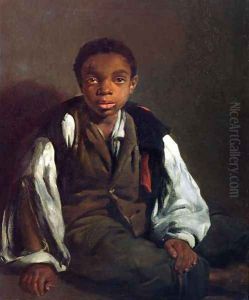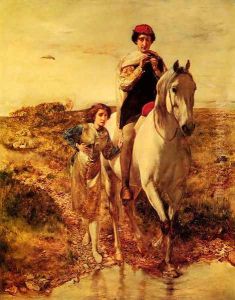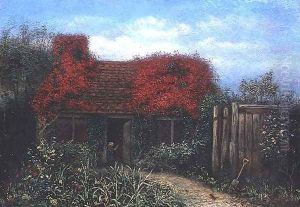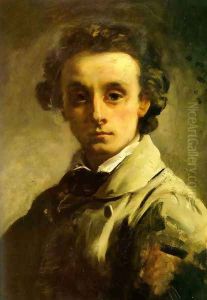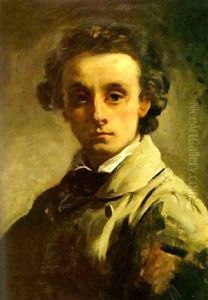William Lindsay Windus Paintings
William Lindsay Windus was a notable British painter, born in 1822 in Liverpool, England. He was part of the Pre-Raphaelite movement, although he is often considered a peripheral figure compared to the founding members. Windus was deeply influenced by the ideals of the Pre-Raphaelite Brotherhood, which sought to reform art by rejecting what it considered the mechanistic approach fostered by Mannerist artists after Raphael and Michelangelo. The Brotherhood was founded in 1848, around the time Windus began to establish his career, and its emphasis on detail, intense colors, and complex compositions had a lasting impact on his work.
Windus's career took off after he exhibited his painting 'Too Late' at the Royal Academy in 1859, which garnered significant attention and praise for its intricate detail and emotive power. This work, like many others by Windus, demonstrated his commitment to the Pre-Raphaelite principles of truth to nature and the exploration of moral and social themes through historical and literary subjects. Despite his association with the Pre-Raphaelites, Windus did not achieve the same level of fame as some of his contemporaries, such as Dante Gabriel Rossetti or John Everett Millais. However, his work was admired for its technical skill and its sensitive portrayal of subjects.
Throughout his career, Windus struggled with the commercial aspect of the art world. His meticulous attention to detail meant that he produced a relatively small body of work, which impacted his financial stability and recognition during his lifetime. Nevertheless, his contributions to the Pre-Raphaelite movement and Victorian art have been reassessed and appreciated in more recent times.
Windus lived most of his life in Liverpool, where he was an active member of the local art scene. He continued to paint until his later years, exploring various subjects and refining his technique. William Lindsay Windus passed away in 1907, leaving behind a legacy that, while perhaps not as well-known as some of his peers, offers a fascinating insight into the diversity and depth of the Pre-Raphaelite movement.
